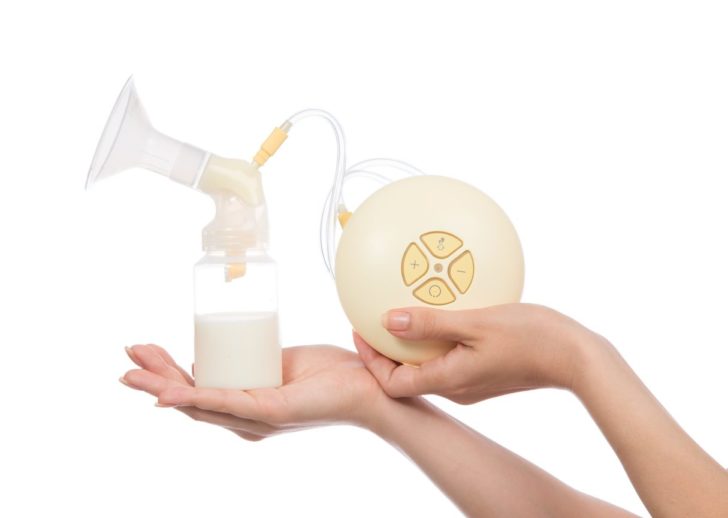Cut the cords and claim your freedom: wearable breast pumps redefine when and where you can express milk. Our guide dives into the best options for discreet, efficient pumping that fits into your life, not the other way around. Learn which wearable breast pump can help you juggle motherhood and your daily commitments—all while keeping you on the move.
Table of Contents
Key Takeaways
Wearable breast pumps feature hands-free operation and in-bra design, eliminating external tubes and cords and allowing mothers to multitask while pumping discreetly.
Innovations in wearable pump technology include smart app connectivity for personalized control, miniature piezo pumps for comfort, and adjustable suction levels akin to hospital-grade pumps.
Top wearable breast pumps in 2024 are evaluated for comfort and performance, with leading options like the Elvie Pump, Willow Go, and the budget-friendly Momcozy S12 Pro.
Exploring the World of Wearable Breast Pumps

Gone are the days when breast pumping meant being confined to a chair near an electrical outlet. The latest hands free breast pumps, designed as wearable breast pumps, are revolutionizing how mothers provide nourishment to their babies. These ingenious devices offer:
Hands-free operation
Fit snugly inside a nursing bra
Grant mothers the ability to pump discreetly during a meeting, at a social gathering, or even while running errands.
The freedom and flexibility these pumps provide can be life-changing, allowing modern mothers to multitask effortlessly without interrupting their daily activities.
What Makes a Pump Wearable?
The hallmark of wearable breast pumps, including electric breast pump options, lies in their in-bra design, which promises a level of mobility that traditional breast pumps simply cannot match. Innovations like the Elvie Pump and Momcozy S12 Pro have done away with the cumbersome external tubes and cords, making them a discreet companion for on-the-go mothers.
Lightweight and compact, these devices are not just about portability; they represent a seamless integration of breastfeeding into a mother’s lifestyle.
Benefits of Choosing a Wearable Breast Pump
Imagine attending a video conference or enjoying a quiet dinner while you pump – wearable breast pumps make this possible. They empower mothers to pump hands-free, offering a discreet and quiet operation that fits seamlessly into their lives. The mobility that comes with wearable breast pumps is unparalleled; no longer is there a need to search for a private space to express milk or to be tethered to a wall socket.
The blend of privacy, convenience, and efficiency is what makes these pumps a game-changer for mothers everywhere.
Innovations in Wearable Pump Technology
As technology forges ahead, so do the capabilities of wearable breast pumps. These devices now boast smart app connectivity, advanced expression modes, and suction levels that rival hospital-grade pumps.
Imagine pumps that not only provide the freedom to move but also the ability to pump smarter, not harder. With designs that accommodate an active lifestyle – yes, even doing cartwheels – and the incorporation of features like:
leak-proof milk storage
hands-free pumping
adjustable suction levels
quiet operation
The latest innovations in wearable pump technology, including the ability to pump remotely, are truly impressive.
The Role of Miniature Piezo Pumps
At the heart of the wearable pump’s evolution lies the miniature piezo pump. These tiny marvels operate on piezoelectric materials that bend and move with the application of electric current, creating a pump action without the need for bulky motors. The result? Wearable pumps that are:
More comfortable and discreet
Offer precise control over suction
Ensure consistent performance
Provide an adjustable experience tailored to a mother’s needs.
The integration of piezo pumps is a testament to the commitment to making breastfeeding technology not only more wearable but also more user-friendly and efficient.
App-Connected Pumping
In an era where smartphones are central to our lives, it’s no surprise that wearable pumps have joined the app-connected world. These apps offer personalized control over the pumping experience, providing the ability to:
Adjust suction patterns and strength levels
Monitor milk volume in real-time
Track pumping history
Receive tailored advice to optimize breastfeeding journey
With pumps like the Elvie Stride and Willow Go, mothers can enjoy these features and more.
These app features not only make pumping more efficient but also provide a sense of empowerment and control to the user, making the task of milk expression more manageable and less daunting.
Top Picks for Wearable Breast Pumps in 2024

As we venture further into 2024, a few wearable breast pumps stand out for their exceptional features and user satisfaction. Here are some of the top options:
Elvie Pump: Known for its discreet design and quiet operation.
Willow Go: Offers powerful suction and the ability to pump on the go.
Momcozy S12 Pro: A budget-friendly option that still delivers on comfort and performance.
Each of these pumps has been carefully evaluated for comfort, breast pump suction, and overall user experience to ensure that they meet the high standards that today’s mothers expect.
The Discreet Champion: Elvie Pump
The Elvie Pump has earned its reputation as a discreet champion in the wearable breast pump market. Its features include:
Ultra-discreet operation, making it an ideal choice for public pumping
Near-silent experience that preserves a mother’s privacy
Personalized control via seven intensity levels for both Stimulation and Expression modes, adapting to individual preferences
These features further enhance the traditional pump experience.
The integration with the Pump with Elvie app allows users to set their starting intensity levels, ensuring a personalized and consistent session each time they pump.
The Power Performer: Willow Go
The Willow Go, a willow wearable breast pump, stands tall as a powerhouse in the wearable pump market, boasting high-capacity milk storage options of 5 and 7 ounces per pump. Its hospital grade suction, reaching up to 280 mmHg, ensures efficient and strong milk expression, rivaling the performance of more traditional hospital grade breast pump setups.
Comfort is not compromised, however, as the correct flange size is critical to both comfort and milk drainage, making the Willow Go a versatile choice for mothers looking for both power and customization.
The Budget-Friendly Workhorse: Momcozy S12 Pro
For mothers seeking value without sacrificing quality, the Momcozy S12 Pro is the go-to option. This budget-friendly wearable pump doesn’t fall short on efficiency, providing an effective milk expression experience at a more accessible price point.
With customizable suction levels ranging from 140 mmHg to 270 mmHg and three different modes, the Momcozy S12 Pro caters to a variety of pumping preferences and stages of lactation, making it a versatile and practical choice for many mothers.
Making the Most of Your Wearable Pump
To truly benefit from the convenience of wearable breast pumps, it’s essential to optimize their usage. This means ensuring a perfect fit, choosing the right settings, and maintaining your pump for lasting efficiency and comfort.
Mothers who often find themselves on the move should pay special attention to their pump’s battery life to avoid interruptions in their pumping schedule, keeping a charger handy as a precaution.
Achieving the Perfect Fit
Achieving the perfect fit is paramount for a successful pumping session. This starts with selecting the right flange size, which should be based on nipple size to ensure comfort and optimal milk expression. Adjusting the pump’s settings to a comfortable suction level is also crucial, as seen with the Momcozy S12 Pro, allowing mothers to tailor the experience to their individual comfort levels.
Additionally, a supportive and well-fitting bra is necessary to keep the pump properly positioned without causing discomfort or shifting during use.
Maintaining and Increasing Milk Supply
A consistent pumping schedule is key to maintaining and increasing milk supply. Experts recommend pumping approximately every three hours, which aligns with a baby’s typical feeding schedule and promotes milk production. Increasing the number of pumping sessions can further stimulate milk production, as frequent emptying of the breasts signals the body to produce more milk.
It’s also important for mothers to understand and adapt to their body’s response to the pump’s suction pattern, refining settings for better milk expression and establishing a quick letdown reflex. Paying attention to the pump’s suction power is especially crucial for mothers who balance work and breastfeeding, ensuring their supply is adequately maintained.
Cleaning and Care
To ensure the longevity and safety of your wearable breast pump, proper cleaning and care are non-negotiable. Here are the steps to sanitize your pump:
Rinse the pump with cold water.
Wash the pump with warm, soapy water, focusing on all parts that come into contact with milk.
Allow the parts to air-dry thoroughly on a clean surface.
Following these steps is crucial to prevent contamination and maintain hygiene.
To further safeguard against microbial contamination, daily sterilization of milk-contacting parts and milk storage bags is recommended, utilizing methods such as a sterilization bag, boiling, or a dishwasher cycle.
Insurance and Cost Considerations
Navigating the financial aspects of breast pump ownership can be as complex as choosing the right pump. The Affordable Care Act has significantly shifted the landscape, with insurance providers now required to cover the cost of breast pumps, a change that has increased market demand. While most insurance plans offer coverage for breastfeeding equipment, the specifics of this coverage can vary greatly, and in some cases, advanced models of wearable breast pumps may only receive partial coverage. Therefore, it’s important to understand the nuances of insurance coverage and out-of-pocket costs, particularly when eyeing the more sophisticated and potentially more expensive wearable pump models.
Understanding Insurance Coverage
Insurance coverage of breastfeeding support and equipment generally includes coverage for breast pumps, which may be provided either as a rental unit or a new unit for the insured to keep. Coverage details can vary, with stipulations about the type of pump (manual or electric), the length of the rental period, and the timing of provision. Following a doctor’s recommendation and securing pre-authorization from a healthcare provider is often required.
While some plans may fully cover standard pumps, more advanced wearable options might require an additional payment. To ensure eligibility, one must typically:
Submit a form
Obtain a prescription
Verify coverage
Select a pump, which is then shipped to their home at no extra charge.
It’s worth noting that coverage under the Affordable Care Act includes both commercial and Medicaid plans, although there are exceptions such as self-funded programs and grandfathered policies.
The Lansinoh Discreet Duo Wearable Pump is an example of an affordable option that most insurance plans are likely to cover fully.
Comparing Costs and Value
When it comes to wearable breast pumps, the cost can be a significant factor in the decision-making process. High-end models like the Elvie and Willow can reach around $550, a considerable increase from the $150-$300 range of non-wearable electric pumps. It’s crucial for consumers to weigh the costs against the value each model offers, taking into account the features, brand recognition, and consumer demand.
This evaluation of cost versus value is particularly important as it ensures that mothers make an informed decision that aligns with their specific needs and the benefits they prioritize.
Personal Stories: Real Moms, Real Experiences
The anecdotes and experiences shared by mothers who have navigated the world of wearable breast pumps and breast milk management offer an invaluable perspective. These stories not only add a personal touch but also provide tried-and-tested insights that can guide others on their breastfeeding journeys.
The recommendations and advice presented here are trustworthy—rooted in the experiences of expert parents, informed by medical professionals, and validated by a community of parents who’ve been through similar challenges.
From Struggles to Success
Wearable breast pumps have been heralded by lactation consultants as a transformative innovation for new mothers. They’ve turned the once-daunting task of breastfeeding into an experience that can be seamlessly integrated into daily life, offering a liberating solution for women everywhere.
Tips from Experienced Pumpers
Seasoned mothers often recommend using wearable pumps in conjunction with traditional wall pumps. This approach maximizes milk removal efficiency and provides a reliable backup, ensuring mothers are prepared for any situation.
Learn more, visit A Mother’s Guide to Pumping at Work . Tips and Tricks.
Summary
As we reach the end of our exploration into the world of wearable breast pumps, it’s clear that these devices are more than just a convenience—they’re a powerful ally in a mother’s breastfeeding journey. The discreet operation, hands-free freedom, and innovative technology of pumps like the Elvie Pump, Willow Go, and Momcozy S12 Pro have set new standards in the industry. These wearable pumps not only support the physical act of breastfeeding but also empower mothers with flexibility and mobility, allowing them to embrace both their personal and professional lives without compromise.
Reflecting on the insights from real moms and the practical tips provided, it’s evident that the success of wearable breast pumps lies in their ability to adapt to the diverse needs and lifestyles of modern parents. Whether you’re looking for a pump that offers hospital-grade suction, app connectivity, or affordability without sacrificing performance, the market in 2024 has a solution for you. Remember to consider insurance coverage and overall value when making your choice, and above all, embrace the journey that is breastfeeding with confidence and grace.
Frequently Asked Questions
What features should I look for in a wearable breast pump?
When choosing a wearable breast pump, prioritize features like discreet operation, hands-free capability, adjustable suction levels, app connectivity for personalized pumping, and a comfortable bra-friendly design to meet your needs effectively. These features can enhance your pumping experience and make it more convenient for you.
How do I know if my insurance will cover a wearable breast pump?
To find out if your insurance covers a wearable breast pump, review your policy or contact your insurance provider for information on coverage and requirements. You may need a prescription and submit a form for eligibility confirmation.
Can wearable breast pumps really offer hospital-grade suction?
Yes, wearable breast pumps like the Willow Go can offer suction levels reaching up to 280 mmHg, comparable to hospital-grade pumps.
Are wearable breast pumps difficult to clean and maintain?
Wearable breast pumps are designed for easy cleaning with parts that can be washed with soapy water and air-dried, but daily sterilization is recommended to prevent microbial contamination.
What is the advantage of app-connected wearable breast pumps?
The advantage of app-connected wearable breast pumps is the ability to personalize pumping experience, track milk volume in real-time, and receive expert guidance to meet breastfeeding goals. This can greatly enhance the overall breastfeeding experience.









